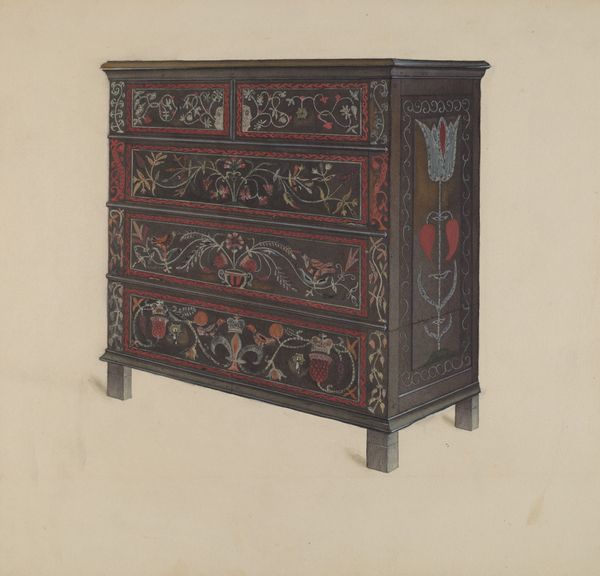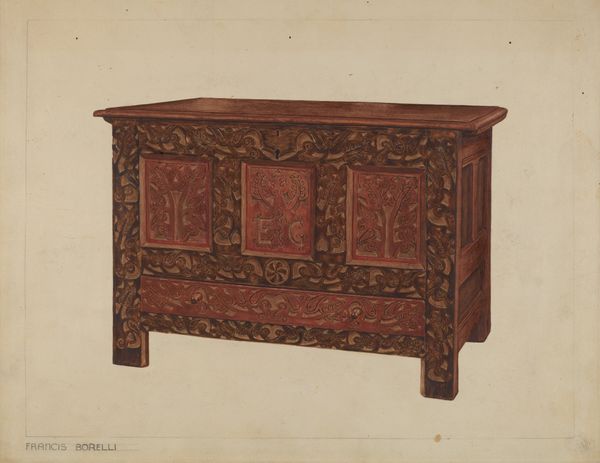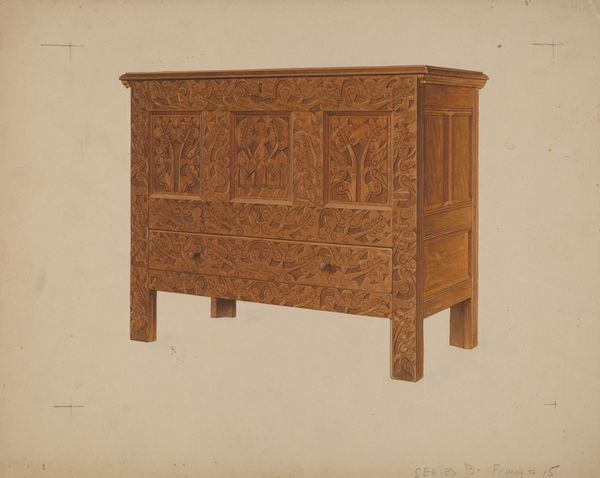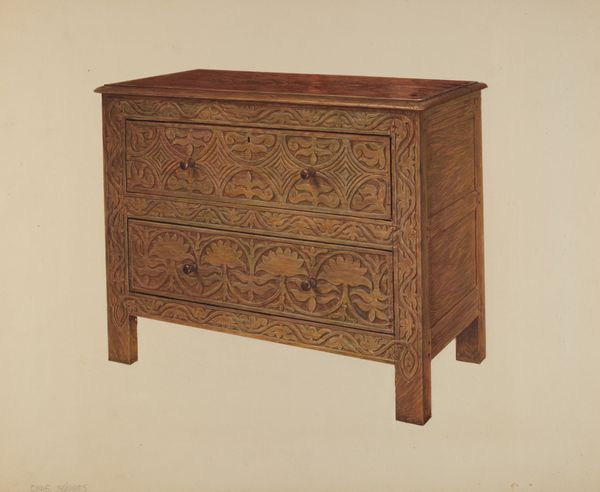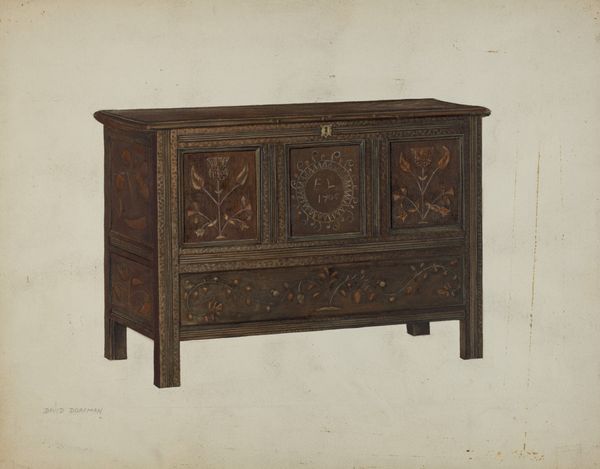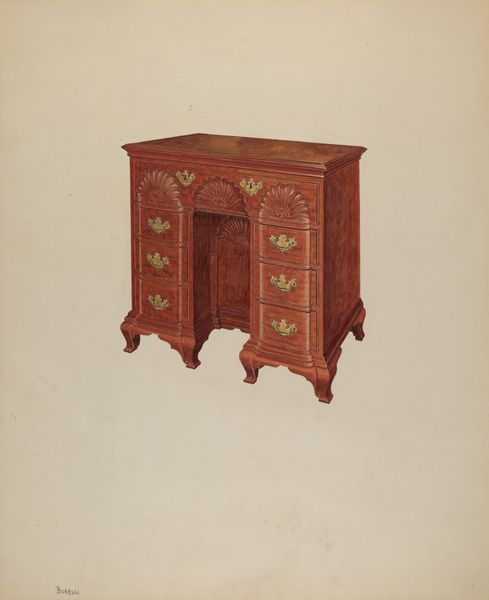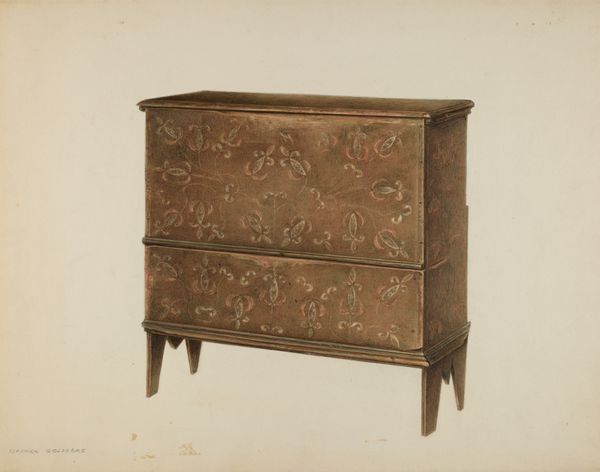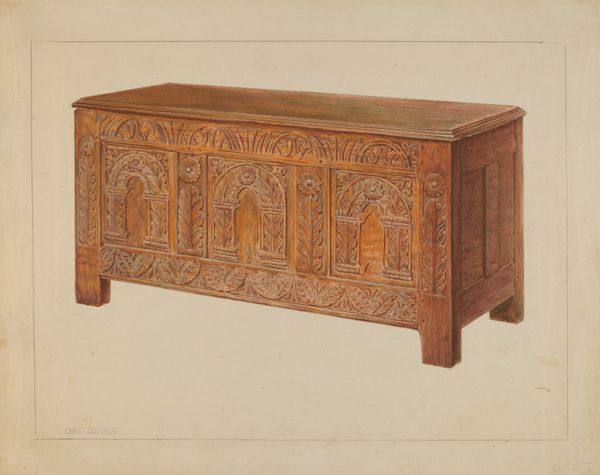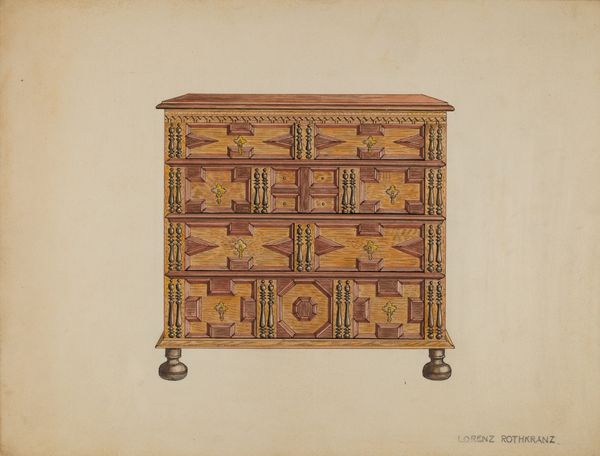
drawing, watercolor, wood
#
drawing
#
water colours
#
watercolor
#
wood
#
watercolor
Dimensions: overall: 22.7 x 29.7 cm (8 15/16 x 11 11/16 in.) Original IAD Object: 2'9"high; 3'10 3/4"wide; 20"deep
Copyright: National Gallery of Art: CC0 1.0
Editor: This is a watercolor drawing of a chest made in 1936 by John Dieterich. It looks like a preliminary study of the chest, meticulously documenting all the details. What draws your eye to this particular piece? Curator: Well, I'm immediately drawn to the confluence of "high art" and what's traditionally seen as "craft." This drawing elevates the chest to a subject worthy of artistic representation. It makes me think about the labor involved in the chest's creation: the carving, the joinery, the finishing. Was Dieterich interested in blurring these lines? Editor: That's an interesting point. The drawing definitely makes you think about the object itself, its physical presence. Is that why you focus on materials? Curator: Exactly. Materiality isn’t just about what something is made of; it’s about the social life of things. Think about where the wood came from, who harvested it, who carved it, and how the chest itself might have been used. The "E" and "G" might offer clues related to an estate. What was being stored, and who was this for? These questions ground the work in a material reality that often gets overlooked. The red coloring may hint to something valuable contained within, too. Editor: I hadn't thought about all the steps and processes involved. The focus on process really opens it up. Does it matter whether the real chest exists? Curator: Not necessarily. The drawing becomes a record of a labor process, regardless. The artist is performing labor by making a representation of the labor of making a chest. It becomes less about aesthetics and more about the whole system of production and consumption. Editor: I see, focusing on materials and means of production really shifts my perspective. Curator: Precisely. Instead of asking if it’s "beautiful," we ask "what work does this artwork do?" Editor: This makes me rethink the artist's role in society too. Curator: Absolutely. Art is not divorced from society and is shaped by the prevailing economic forces. We come to understand it not merely by the final product, but by what creates it, too.
Comments
No comments
Be the first to comment and join the conversation on the ultimate creative platform.
